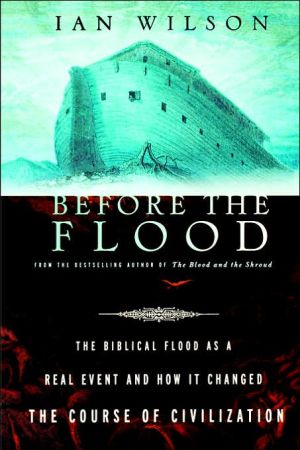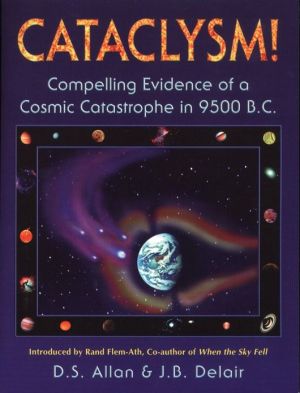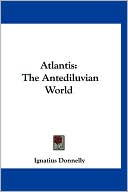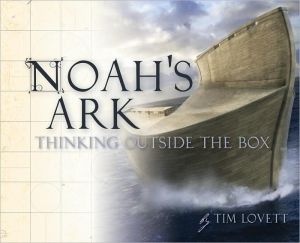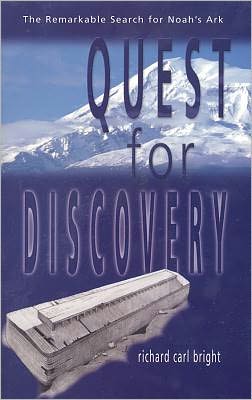Before the Flood: The Biblical Flood as a Real Event and How It Changed the Course of Civilization
In the six hundredth year of Noah's life, in the second month, the seventeenth day of the month, the same day were all the fountains of the great deep broken up, and the windows of heaven were opened. And the rain was upon the earth forty days and forty nights.\ The great Biblical flood so described in Genesis has long been a subject of fascination and speculation. In the 19th century the English archbishop James Ussher established it as having happened in the year 2348 B.C., calculating what...
Search in google:
In the six hundredth year of Noah's life, in the second month, the seventeenth day of the month, the same day were all the fountains of the great deep broken up, and the windows of heaven were opened. And the rain was upon the earth forty days and forty nights.The great Biblical flood so described in Genesis has long been a subject of fascination and speculation. In the 19th century the English archbishop James Ussher established it as having happened in the year 2348 B.C., calculating what was then taken as the age of the earth and working backward through the entire series of Biblical "begats." Proof of the flood, which is an element of so many creation myths, began in earnest when archaeology started connecting physical evidence with Biblical story. The dream of proving the Bible as literal truth has proven irresistible, producing both spurious claims and serious scholarship.As best-selling historian Ian Wilson reveals in this fascinating new book, evidence of a catastrophic event has been building steadily, culminating in the work of William Ryan and Walter Pitman. Several years ago Ryan and Pitman had posited that around 5600 BC there had an inundation in the Black Sea of such proportions that it turned the freshwater lake into a saltwater lake by connecting it to the Mediterranean. Were that true, they estimated that there would be signs of civilization 300 feet below the surface of the Black Sea. In September 2000, using his famous underwater equipment, Robert Ballard (of SS Titanic fame) explored parts of the Black Sea near the Turkish shore and found the remains of wood houses. There had been a flood, and whether God's wrath or not it had destroyed everything around it for hundreds of miles, killing tens of thousands of people.Exploring all the archeological evidence, Wilson explains how the Black Sea flood and the Biblical flood have to be connected. In particular, Wilson argues, learnedly and persuasively, that the center of the civilized world was further to the West than previously thought-not in Egypt or Mesopotamia but in what is today Northern Turkey. The earliest, antediluvian civilizations may have migrated east into those places we have come to call the cradles of civilization, forced by the Black Sea flood to create new settlements. Scrupulous in its details and compelling in its sweep, Before the Flood is narrative detective history at its most provocative, contributing a vital new chapter to the debate about the Bible and origins of the modern world. Publishers Weekly Historian Wilson (The Blood and the Shroud), who has made a career of proving the authenticity of the Shroud of Turin, now turns his attention to supporting the historical reality of the biblical flood in this sweeping narrative of history, mythology and philology. Building upon the work of William Ryan and Walter Pitman (Noah's Flood: The New Scientific Discoveries About the Event That Changed History), Wilson shows that around 5600 B.C. a huge wave from the Mediterranean, caused by the melting glaciers of the last Ice Age, broke over the land mass that connected Turkey to Europe, creating the Bosporus Strait. Wilson draws on recent archeological evidence to argue that this wave inundated agricultural societies around the Black Sea, creating a worldwide diaspora and driving some of the survivors south into Egypt, Mesopotamia and other parts of the Middle East. This Black Sea flood and the southern migration, Wilson argues, are the basis for the Genesis tale of Noah. He synthesizes the last 40 years' worth of archeological findings into a lively detective story, showing how various cultures in Europe, Asia and the Middle East still bear the vestigial traces of their Black Sea roots. He confirms his theory by citing the numerous myths of a great devastating flood and its aftermath among the Sumerians, Babylonians, Greeks and others. Wilson does not aim to prove the literal truth of the Bible story-only that Noah had real-life counterparts who escaped the flood by ship. Nonetheless, the book is sure to spur some lively debates. B&w illus. and photos. (Dec. 12) Copyright 2002 Cahners Business Information.
Author's PrefaceviiiIntroduction: What's in a Date?xiChapter 1When the Ice Melted1Chapter 2The Noah Family of Flood Stories14Chapter 3Modern-day Flood Myths27Chapter 4The Black Sea 'Burst-Through'41Chapter 5Amazing Finds57Chapter 6Verdant Landscapes72Chapter 7The First Geneticists83Chapter 8The First Accountancy94Chapter 9A Stone Age Metropolis108Chapter 10Double Catastrophe125Chapter 11Whither the Diaspora?136Chapter 12Who Had the Ships?152Chapter 13Who Stayed at Home?167Chapter 14An African Interlude183Chapter 15Empire of the Goddess197Chapter 16When Patriarch Met Matriarch212Chapter 17Atlantis: Fact or Fiction?233Chapter 18The Lingering Memory249Chapter 19The Continuing Quest267Notes and References279Bibliography303AppendixSome Key Documents310
\ Publishers WeeklyHistorian Wilson (The Blood and the Shroud), who has made a career of proving the authenticity of the Shroud of Turin, now turns his attention to supporting the historical reality of the biblical flood in this sweeping narrative of history, mythology and philology. Building upon the work of William Ryan and Walter Pitman (Noah's Flood: The New Scientific Discoveries About the Event That Changed History), Wilson shows that around 5600 B.C. a huge wave from the Mediterranean, caused by the melting glaciers of the last Ice Age, broke over the land mass that connected Turkey to Europe, creating the Bosporus Strait. Wilson draws on recent archeological evidence to argue that this wave inundated agricultural societies around the Black Sea, creating a worldwide diaspora and driving some of the survivors south into Egypt, Mesopotamia and other parts of the Middle East. This Black Sea flood and the southern migration, Wilson argues, are the basis for the Genesis tale of Noah. He synthesizes the last 40 years' worth of archeological findings into a lively detective story, showing how various cultures in Europe, Asia and the Middle East still bear the vestigial traces of their Black Sea roots. He confirms his theory by citing the numerous myths of a great devastating flood and its aftermath among the Sumerians, Babylonians, Greeks and others. Wilson does not aim to prove the literal truth of the Bible story-only that Noah had real-life counterparts who escaped the flood by ship. Nonetheless, the book is sure to spur some lively debates. B&w illus. and photos. (Dec. 12) Copyright 2002 Cahners Business Information.\ \ \ \ \ Library JournalThe noted historian and author of Turin Shroud and The Blood and the Shroud turns his trained, professional eye to a specific event from the Bible: the narrative of the Flood (cf. Genesis 6:5-9:17). Despite the headline-grabbing style of the book's subtitle, the author's scholarly methodology examines serious archaeological, historical, meteorological, religious, and literary artifacts and issues. Building upon the groundbreaking hypothesis of William Ryan and Walter Pittman in Noah's Flood, Wilson posits the historical nucleus of the biblical Flood narrative on the flooding of the Black Sea by the Mediterranean Sea at the end of the last Ice Age, around 5600 B.C.E. Faithful to the evidence, the author points out where gaps in the archaeological record do not currently allow us to establish definitively a direct causal link between the later literary accounts of the Flood in Genesis or The Epic of Gilgamesh and events at the Black Sea. The author's style treats serious issues in a scholarly manner but is easily understandable and highly readable. Recommended for large public libraries.-Charlie Murray, C.S.S., Fordham Univ., New York Copyright 2002 Cahners Business Information.\ \ \ Kirkus ReviewsA blend of archaeological fact and anthropological speculation by Australian historian Wilson. The flood as described in Genesis would have brought the world sea level up 6,000 feet, and establishing it as a real event would entail, as Wilson concedes, a "complete revision of all the basic understandings underpinning modern-day geology." Wilson is not proposing anything so drastic. Rather, he wants to connect a set of flood myths that occurred among ancient peoples in the swathe of land between Greece and India with the recent discovery that the present composition and size of the Black Sea can be dated to 5600 b.c., when the land barrier between the Mediterranean and the Black Sea crumbled. If it fell in one blow, the resulting flood would have caused the fresh-water Black Sea to rise for two years, flooding about 60,000 square miles. Both the extent and speed of the flood would have been catastrophic for humans living around the water. Wilson describes the fascinating underwater explorations of submarine archaeologist Robert Ballard, who has found signs of human habitation seventy kilometers out from the present Black Sea shoreline. Who were they? Wilson believes they are congruent with the goddess-worshipping inhabitants of an Anatolian site, Çatal Hüyük. That site dates from before 6000 b.c. and shows its people to have been sophisticated agriculturalists and weavers. Wilson speculates that when the site was abandoned around, probably because of a climate change, the inhabitants emigrated to the shores of the Black Sea, then a fresh-water lake. Escaping the flood, these people seeded civilization around the Mediterranean, spreading flood myths. Wilson backs up his idea with somedubious sources, such as Robert Graves's The White Goddess (1948). More troubling, though, is Wilson's construing of myth solely in terms of "collective memory," an anthropologically naïve move. A bold revision of ancient history that is well worth reading, even if its conclusions sometimes overshoot the evidence.\ \
